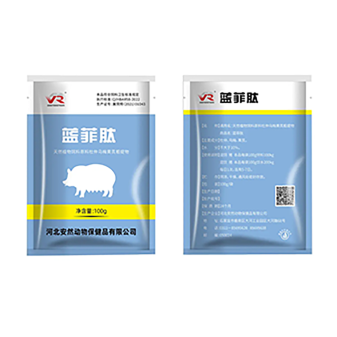- Afrikaans
- Albanian
- Amharic
- Arabic
- Armenian
- Azerbaijani
- Basque
- Belarusian
- Bengali
- Bosnian
- Bulgarian
- Catalan
- Cebuano
- Corsican
- Croatian
- Czech
- Danish
- Dutch
- English
- Esperanto
- Estonian
- Finnish
- French
- Frisian
- Galician
- Georgian
- German
- Greek
- Gujarati
- Haitian Creole
- hausa
- hawaiian
- Hebrew
- Hindi
- Miao
- Hungarian
- Icelandic
- igbo
- Indonesian
- irish
- Italian
- Japanese
- Javanese
- Kannada
- kazakh
- Khmer
- Rwandese
- Korean
- Kurdish
- Kyrgyz
- Lao
- Latin
- Latvian
- Lithuanian
- Luxembourgish
- Macedonian
- Malgashi
- Malay
- Malayalam
- Maltese
- Maori
- Marathi
- Mongolian
- Myanmar
- Nepali
- Norwegian
- Norwegian
- Occitan
- Pashto
- Persian
- Polish
- Portuguese
- Punjabi
- Romanian
- Russian
- Samoan
- Scottish Gaelic
- Serbian
- Sesotho
- Shona
- Sindhi
- Sinhala
- Slovak
- Slovenian
- Somali
- Spanish
- Sundanese
- Swahili
- Swedish
- Tagalog
- Tajik
- Tamil
- Tatar
- Telugu
- Thai
- Turkish
- Turkmen
- Ukrainian
- Urdu
- Uighur
- Uzbek
- Vietnamese
- Welsh
- Bantu
- Yiddish
- Yoruba
- Zulu
ડીસેમ્બર . 09, 2024 19:13 Back to list
Tilmicosin Injection 250 mg/ml for Veterinary Use and Animal Health Treatment
Tilmicosin 250 mg/ml An Overview of Its Use, Mechanism, and Implications in Veterinary Medicine
Tilmicosin is a synthetic macrolide antibiotic widely used in veterinary medicine for its effectiveness against a variety of bacterial infections in livestock and poultry. Formulated as a 250 mg/ml solution, it is particularly valued for its role in controlling respiratory diseases in animals, where effective treatment can substantially impact animal health and agricultural productivity.
Mechanism of Action
Tilmicosin works by inhibiting bacterial protein synthesis, which is crucial for the growth and reproduction of bacteria. It achieves this by binding to the bacterial ribosome, effectively disrupting the translation process that leads to protein formation. This action is primarily bacteriostatic, meaning that it inhibits bacterial growth and replication without necessarily killing the bacteria outright. Tilmicosin is particularly effective against Gram-positive bacteria and some Gram-negative organisms, making it a versatile option for treating infections caused by a range of pathogens.
Clinical Uses
The primary clinical applications of tilmicosin include the treatment of respiratory diseases in cattle, swine, and poultry. Common conditions treated with tilmicosin include pneumonia, pleuropneumonia, and other respiratory infections characterized by coughing, nasal discharge, and lethargy. Given the high metabolic rate and rapid growth of livestock, timely intervention with antibiotics like tilmicosin can prevent deterioration of health and ensure optimal growth performance.
In poultry, tilmicosin is often employed to mitigate infectious bronchitis, colibacillosis, and other respiratory complications. The formulation allows for easy administration through feed or water, which is crucial in managing large populations of animals where individual treatment could be impractical.
Administration and Dosage
Tilmicosin is typically administered through oral routes or parenterally, depending on the species and the specific condition being treated. The dosage is carefully calculated based on the animal's weight and the severity of the infection. Adhering to established dosage guidelines is vital, as improper use can lead to therapeutic failure or the development of antibiotic resistance.
tilmicosin 250 mg ml

For instance, in cattle, the standard dosage might be around 10 mg/kg body weight when administered via subcutaneous injection. In treating swine, it can be included in drinking water at a concentration that ensures the appropriate therapeutic dose is received by all animals.
Safety and Precautions
While tilmicosin is generally regarded as safe when used as directed, it is essential for veterinarians and animal handlers to observe certain precautions. The drug can be harmful to humans, particularly those who are pregnant or have heart conditions, so proper handling and protective measures are required during administration. Additionally, its use is regulated in many countries, with strict guidelines surrounding withdrawal periods before animals are sent to slaughter for human consumption.
Implications for Animal Health and Food Safety
The use of tilmicosin has significant implications for animal health and, indirectly, for food safety. Effective treatment of infections improves the overall health and productivity of livestock, reducing mortality rates and enhancing growth rates. This, in turn, can influence market stability and the availability of animal products for consumers.
However, the reliance on antibiotics in farming raises concerns about antimicrobial resistance (AMR). Misuse or overuse of antibiotics can lead to the development of resistant bacterial populations, making infections harder to treat. Therefore, integrated approaches that include good management practices, vaccination, and appropriate antibiotic use are essential for maintaining the efficacy of tilmicosin and other antimicrobials in veterinary medicine.
Conclusion
Tilmicosin 250 mg/ml represents a critical tool in the arsenal of veterinary antibiotics, particularly for the management of respiratory diseases in livestock and poultry. Its effective mechanism of action, combined with proper administration and safety precautions, makes it a valuable resource for veterinarians. However, ongoing vigilance concerning antibiotic resistance and stringent adherence to regulatory practices are crucial to ensure the sustainable use of this medication in the future. As we advance, striking a balance between effective treatment and responsible antibiotic use will be key to safeguarding both animal and human health.
-
Guide to Oxytetracycline Injection
NewsMar.27,2025
-
Guide to Colistin Sulphate
NewsMar.27,2025
-
Gentamicin Sulfate: Uses, Price, And Key Information
NewsMar.27,2025
-
Enrofloxacin Injection: Uses, Price, And Supplier Information
NewsMar.27,2025
-
Dexamethasone Sodium Phosphate Injection: Uses, Price, And Key Information
NewsMar.27,2025
-
Albendazole Tablet: Uses, Dosage, Cost, And Key Information
NewsMar.27,2025













